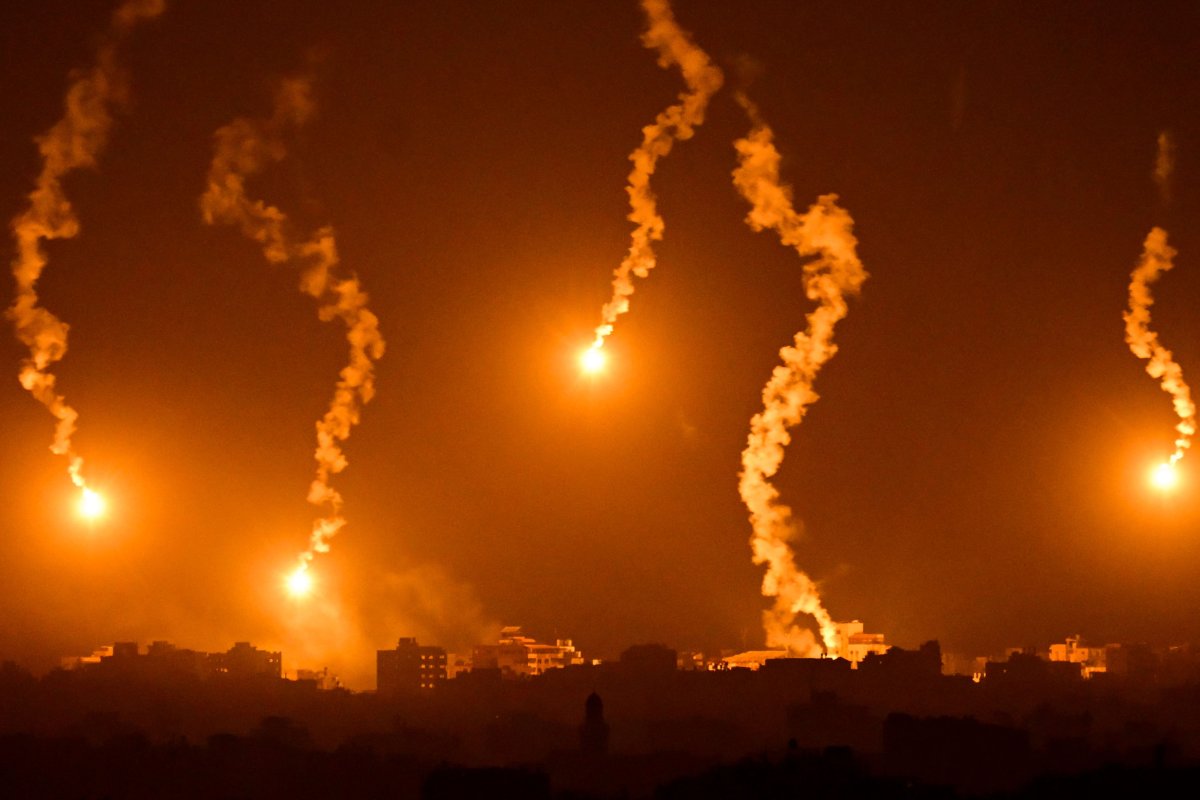The Pentagon has further bolstered its naval strike capabilities in the Middle East amid Israel’s war against Palestinian militant group Hamas, with United States Central Command—known as CENTCOM, and responsible for U.S. operations in the Middle East, Central Asia, and parts of South Asia—confirming the weekend arrival of a nuclear submarine in the region.
CENTCOM posted a rare announcement on X, formerly Twitter, on Sunday noting that an Ohio-class nuclear submarine “arrived in the U.S. Central Command area of responsibility,” without offering further details regarding the specific location or the name of the vessel in question. Newsweek has contacted CENTCOM by email to request further information.
The U.S. Navy’s Ohio-class offering consists of 14 ballistic missile submarines (SSBNs) and four cruise missile submarines (SSGNs), the latter converted to fire Tomahawk cruise missiles rather than their original nuclear-armed ballistic missile loadout.
One SSGN can be armed with 154 Tomahawk cruise missiles, significantly more than the number carried by U.S. guided-missile destroyers and attack submarines. Tomahawk missiles can carry up to a 1,000-pound high-explosive warhead out to around 1,500 miles.
Woohae Cho/Getty Images
The Pentagon has been expanding its presence in the Mediterranean and Middle East regions amid Israel’s showdown with Hamas in Gaza, prompted by the militant group’s October 7 infiltration attack into southern Israel that killed at least 1,400 people, per figures published by the Associated Press. Roughly 240 people were also taken hostage.
Two American nuclear-powered aircraft carriers—the USS Gerald R. Ford and USS Dwight D. Eisenhower—were sent to the Mediterranean Sea amid rising regional tensions. As of last week, the Dwight D. Eisenhower was operating in the Red Sea. The Pentagon has also dispatched additional air defense capabilities to the region.
Israel’s subsequent unprecedented land, air, and sea campaign in the Gaza Strip is ongoing, and has so far killed at least 9,448 Palestinians as of November 4, the Associated Press reported citing the Hamas-run Health Ministry in Gaza.
The threat of regional escalation is looming over the latest conflagration in the besieged Palestinian coastal territory, with multiple Iranian-aligned groups involved. Hamas, and Palestinian Islamic Jihad in Gaza—both funded and armed by Tehran—are continuing their attacks against Israel, and the Houthi movement in Yemen has launched ballistic missiles and drones towards Israel. U.S. forces are also in the firing line, with several American bases in Iraq and Syria repeatedly targeted by Iranian-backed militias.
Fighting is also ongoing along the Lebanese border between Israel Defense Forces (IDF) and Hezbollah, a powerful Shiite militia aligned with Tehran.
On Friday, Hezbollah leader Hassan Nasrallah distanced himself from the Hamas October 7 attack, saying the operation was “100 percent Palestinian in terms of both decision and execution.” Meanwhile, he lauded what he called the “very important and significant” Hezbollah operations against Israel and vowed they would not be “the end” of the Lebanon-based group’s involvement.
The Iranian-backed Houthi movement in Yemen has claimed several drone and missile attacks towards Israel since October 7, and last week, a spokesperson for the group promised more attacks “to help the Palestinians to victory.” One barrage of Houthi missiles and drones, which the Pentagon assessed as “potentially” heading towards Israel, was intercepted by the USS Carney in the Red Sea in October.
U.S. forces in Syria and Iraq, meanwhile, have repeatedly come under attack by Iranian-aligned groups, injuring several American troops and causing the death of one civilian contractor. In late October, the U.S. responded to the attacks by launching airstrikes on Iranian-linked targets inside Syria.
On Sunday, Defense Secretary Lloyd Austin spoke with his Israeli counterpart Yoav Gallant to underscore Washington, D.C.’s “ironclad commitment to Israel’s right to defend itself,” per a Pentagon readout.
Austin, the statement said, “emphasized the importance of both protecting civilians and delivering humanitarian assistance. He reaffirmed the U.S. commitment to deter any state or non-state actor seeking to escalate this conflict.”

ARIS MESSINIS/AFP via Getty Images
Uncommon Knowledge
Newsweek is committed to challenging conventional wisdom and finding connections in the search for common ground.
Newsweek is committed to challenging conventional wisdom and finding connections in the search for common ground.


